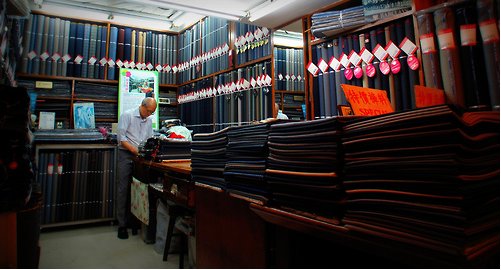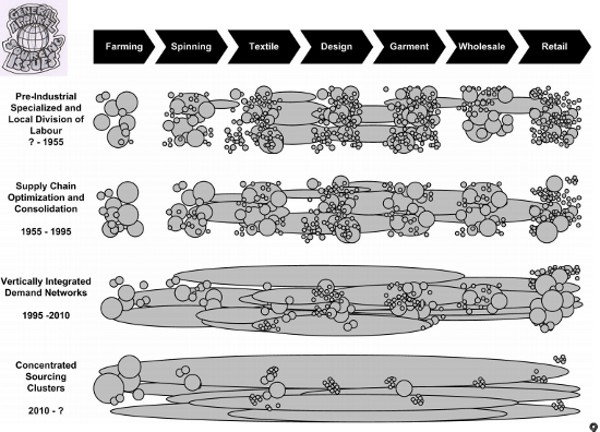 In the luxury segment, production focuses on highly complex garments and low order volumes that might involve just five pieces per style which makes sourcing very challenging. “The main issue in premium apparel sourcing is that the traditional manufacturing clusters have disappeared or lost their competitive edge, 95% of the fabric we use in tailored women’s wear comes from Italy, but the number of factories has reduced massively in recent years” explains Jan Hilger, director of operations at German premium label Escada, stated during the IAF World Apparel Convention in Oporto (24th – 28th of September 2012).
In the luxury segment, production focuses on highly complex garments and low order volumes that might involve just five pieces per style which makes sourcing very challenging. “The main issue in premium apparel sourcing is that the traditional manufacturing clusters have disappeared or lost their competitive edge, 95% of the fabric we use in tailored women’s wear comes from Italy, but the number of factories has reduced massively in recent years” explains Jan Hilger, director of operations at German premium label Escada, stated during the IAF World Apparel Convention in Oporto (24th – 28th of September 2012).
In the world of luxury, it is mainly about finding suppliers that can deliver at the required quality level – something that is not quite as straight forward to find any more as it used to be. Economic hard time and tough competition from lower priced countries have made away with entire geographies where, once upon a time, the entire apparel supply chain was concentrated on a local level, and competition as well as knowledge exchange the local way of life.
For the luxury sector the high throughput units mostly available overseas are not an option. Neither are the somewhat haphazard quality results achieved. In a niche of the market where some garments maybe only produced a handful of times, tight control, short ways to production, and meticulous quality control are a sine-qua-non. And for European brands this means cherishing and averaging what is still available within Europe to cater to their needs, and build an industry structure that suits all needs: their own as premium brands, as much as those that produce for them.

The approach currently pursued by European high-end apparel brands to address the problem is that of ‘High End Fashion Cluster‘ (for a visual definition, see illustration). The term, in essence, means collaborations among high-end brands with the aim to create larger order quantities, hence develop clout, and as a consequence encourage suppliers to deliver more consistent production qualities as well as production efficiencies.
The premium brands, however, are just as aware of that their suppliers face very similar challenges to themselves – a fact that sparked upstream collaboration. “A first initiative is a joint project of six apparel manufacturers from Austria, Germany, Romania, Slovenia, Macedonia and Croatia to increase the attractiveness of sewing jobs and find ways to enhance the reputation of the profession to attract young people and talent back into the factories. As the sewing industry depends on skilled and trained professionals, the lack of youth in many factories has become a serious issue which can relate to the reputation of sewing in a factory in general.”
So far the initiative – first pitched on March 20, 2011 – has been overwhelmingly welcomed. Within only the first 18 month 62 companies have already joint the membership base. As a non-formal network, the membership base consists only brands that actually do collaborate with their peers.
Further information:
– Just Style, “Luxury sourcing challenges tackled through collaboration”. Read article.
– Fashion United, ” Collaboration only way to survive in fashion”. Read article.

